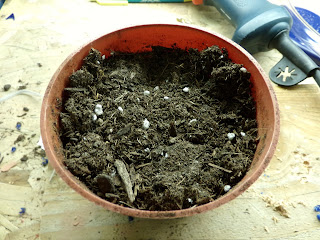I'm currently working on various versions of 'alternative' gardening. This project is made from old shipping pallets. There are old shipping pallets everywhere and most of them can be claimed completely free. This is a first attempt of a raised garden. I finished the frame work tonight. I'll begin working on the inner components later this week.
This is made from two different sized pallets. One large and one small (this is why it is rectangular).
I started by cutting the large pallet in half and taking the small pallet apart for the two smaller ends
I pre-drilled holes (because pallet wood is hard and tends to split easily) and then screw the pieces together for a 20 inch high raised garden. I then lined the inside lower half with plywood (this too was salvaged plywood). I will eventually make this raised garden into a self watering garden. Similar in theory to the 5 gallon bucket planter I made last month. Then, after all parts were screwed into place I covered the entire raised garden box with linseed oil.
***NOTE***
only use pallets marked with HT (Heat Treated). Never use a pallet for gardening marked with CT (Chemical Treated).
I'll let the pictures tell the story.

















































